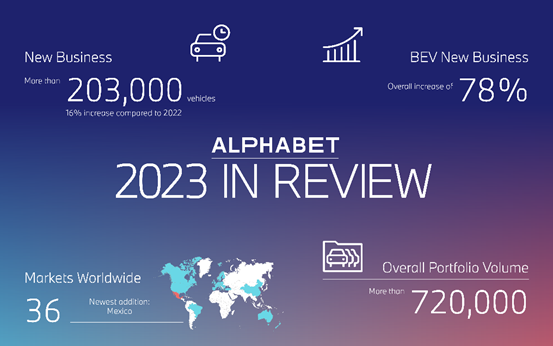2008 could see some dealers prosper, while others falter

How well do you really know your competitors?
Access the most comprehensive Company Profiles on the market, powered by GlobalData. Save hours of research. Gain competitive edge.

Thank you!
Your download email will arrive shortly
Not ready to buy yet? Download a free sample
We are confident about the unique quality of our Company Profiles. However, we want you to make the most beneficial decision for your business, so we offer a free sample that you can download by submitting the below form
By GlobalData
Despite doom and gloom predictions for UK motor dealers during
2008, David Pattison, senior analyst at Plimsoll Publishing is
bullish regarding at least 69 per cent of them.
Of the 1,550 firms analysed in the 2008 Plimsoll Portfolio
Analysis of UK Motor Dealers, Pattison identifies four clearly
defined groups.
“For a certain number of dealers,” he says, “it could turn out
to be a very exciting year. The analysis shows 438 firms chasing
extra market share at any cost, 284 successful companies poised to
go on the offensive, 476 being squeezed out of the market and some
352 sitting the whole thing out.”
The market chasers
Of the 438 companies seeking to grow market share, Pattison
comments: “They have spent 2007 gearing up for growth – to such an
extent that some of them are completely reliant on outside finance.
Despite the prospect of even tighter credit they look surprisingly
confident to continue with their aggressive expansion plans.”
With this sector’s expected growth rates likely to be in the 11
to 13 per cent range during 2008, they could “cause chaos” in the
market as their undercutting pricing policies “cripple the
competition”. Capturing sales from other dealers is a key part of
their strategy.
He adds: “The biggest threat to these companies is any
interruption to cash flow, which could be fatal. They need to hope
that the financiers and the banks don’t become any more nervous as
the year develops.”
The predators
This group, numbering around 284 according to Pattison, has the
most to gain in 2008. The companies in question are capable of
funding their investments with their own cash rather then looking
for outside finance.
“They have enjoyed average profit margins of 1.5 per cent in the
last two years,” he says, “and the economy will play into their
hands in 2008 as competitors go under and cheap acquisitions appear
on the market. The biggest danger in this sector is missing
opportunities because of a lack of clear strategy.”
The prey
Plimsoll identifies these 476 dealers as being badly exposed
because around 51 per cent of them are losing money. They are in
debt and their ability to respond is slow. “If they act quickly,”
he stresses, “cut costs and bring their bad news out now, they may
still turn things around.”
The fence sitters
These dealers, numbering around 352, have been slowing down
their capital expenditure, controlling costs and sticking to
profitable areas of their business. Pattison says: “They have been
profitable, making margins of more than 1 per cent year on year,
often in niche markets.”
These firms may appear to be in the lowest risk category to ride
out the credit storm, although they may be at risk from aggressive
dealers who target their sector of the market.
Sales growth
The difference in sales growth between individual companies in
the retail motor industry is dramatic. Only some 8 per cent of
dealers maintained the same level of sales in 2007 as the previous
year – although a handful of dealers managed to grow their sales
volumes hugely (see table 1). The total market size increased by
2.9 per cent last year. Estimates place this total market size at
£127.4bn – up from £123.8bn the previous year.

* denotes that the analysis for this company includes at least
one financial period not lasting 52 weeks.
N.B. The data for the above companies corresponds to their latest
accounts filed at Companies House.
Great variations in gross profits
Currently, at an average motor dealership, gross margins
represent some 11 per cent of sales. Despite this average, 1 per
cent of companies recorded a gross profit margin over 50 per cent
(see table 2).
Over half of the companies increased the actual sterling value
of their gross profits in their latest year of accounts. In
general, the report found that the larger companies are not
outperforming their smaller counterparts. The average gross profit
margin of a smaller company is similar to that of a larger company
at 11.4 per cent.

Each of these companies has a gross profit margin well above the
average for the rest of the industry. Their minimum margin is 26.3
per cent compared to the industry average of 11.4 per cent.
However, some companies survive very well on low gross profit
margins, trading companies or low added-value companies for
example. They deliver good returns by keeping the rest of their
overheads low.
Mixed message from pre-tax returns
The pre-tax profit return on total assets is used by Plimsoll as
a vital guide to profitability. It measures the pre-tax profit
return on total investment – defined as all company assets, fixed
assets, intermediate and intangible, including all other assets
such as stock, debtors and cash. It is crucial in measuring the
effectiveness of the investment to deliver a return (see table
3).

The latest industry average for pre-tax profit return on total
assets is 2.4 per cent. This is up on last year’s average of 2.2
per cent. If used in conjunction with a trading stability chart it
is vital in spotting the early signs of problems with a
company.
A typical example may be seen in a company which is expanding
well and where both sales and investment are increasing. Yet, if
the profitability is not maintained, this ratio will decline and
lead to extra borrowing to finance the expansion and further reduce
the ratio through interest payments.
Some companies can score well in this ratio simply because their
asset base is well below that of their competitors. I.e. they do
not own their properties or have low stocks or debtors. Some
dealers, however, can score poorly if they hold large intangible
assets or large property assets.


The Plimsoll Portfolio Analysis – UK Motor Dealers is a
detailed report analysing some 1,550 motor dealers. It can be
purchased from www.plimsoll.co.uk priced £350 for
a hard copy or PDF version. Readers of Motor Finance can obtain a
£50 discount reducing the cost to £300. Orders/enquiries can be
sent to Clair Sherwood on
c.sherwood@plimsoll.co.uk
Motor Finance Issue: 42 – April 08
by
Published for the web: April 23 08 9:49
Last Updated: April 24 08 15:47







